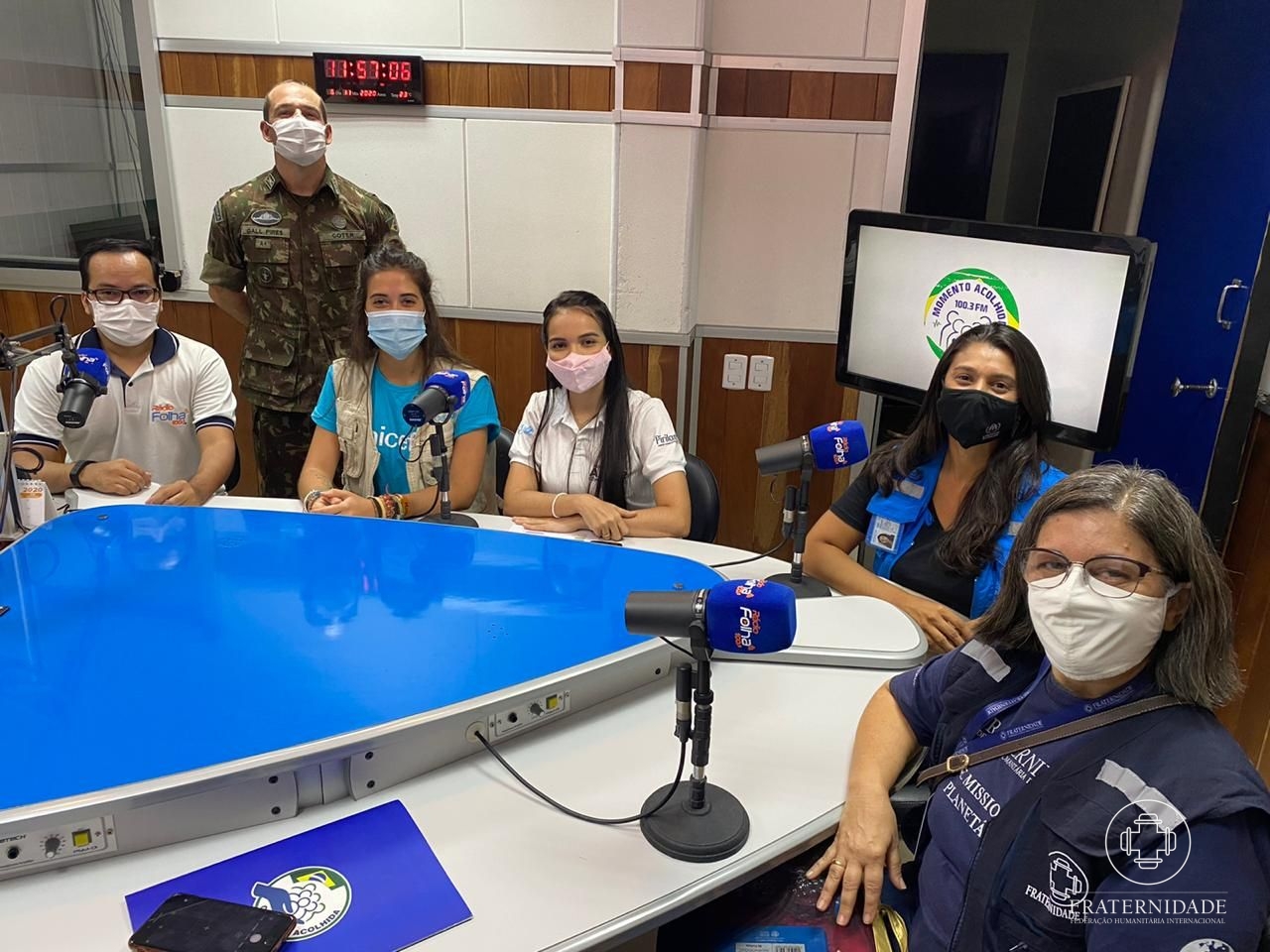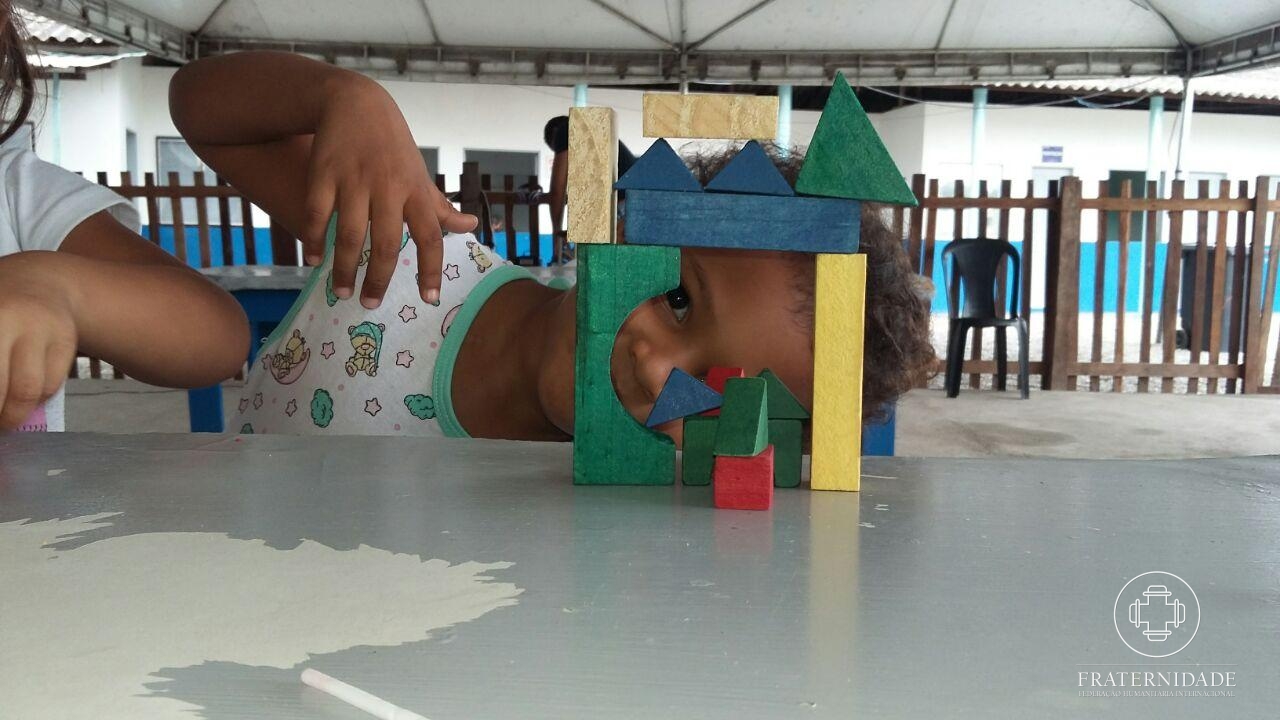Fátima Cavalcante, volunteer missionary of the Fraternity – International Humanitarian Federation (FIHF), spoke about Art-Education in the shelters under the management of the institution, in an interview with the Radio Program of Acolhida (Welcome) Operation, carried by Folha FM.
Follow a summary of what was addressed by the Missionary.
Art-Education in the Humanitarian Roraima Mission
Transforming traumatic situations into new opportunities for growth and renewal is one of the tasks of the Fraternity – International Humanitarian Federation (FIHF) with the Venezuelan refugee population, taken into the five shelters under the management of the institution. To leave one’s country to look for better conditions in life can be profoundly traumatic. It is a leap into the unknown, and in this process, uncertainty and insecurity can leave deep impressions.
Acolhida (Welcome) Operation, created by the Brazilian government, tries to receive them with open arms. And the Fraternity (FIHF) is one of the partnership organizations in this collective welcoming effort.
Children especially are extremely vulnerable to insecure situations with the loss of their normal life rhythms. What needs to be done to avoid turning challenging situations into traumas is to provide security, stability, and peace.
The Fraternity (FIHF) encourages continued educational processes and practices for children, young people, and adults in the five shelters under their management. Efforts are made to create safe learning environments to encourage signing up, participation and creativity through informal educational practices and playful activities that involve:
- Story telling
- Drawing and painting
- Music
- Body language
- Manual work
- Handicrafts
- Photography workshop for young people
- Environmental education
- Practical activities with colors, numbers and forms
- Incentives for reading, so that the children and young people not be severely impacted in their learning process (especially in this time of the pandemic).
- Sports
Playing is a serious business
Playing has a fundamental role in the rescue of the child’s essence. It is also a powerful tool in the closing of wounds, once there is the possibility for the child to find meaning in life. Through play, the child manifests their personality and becomes organized as they build their world. It’s necessary to provide conditions for the children to be able to build on a solid and positive foundation, form an opinion on what is around them, and with assurance, vent their natural need for movement, perception and exploration of the world, growing joyfully.
Music: expression of the soul and an instrument of healing for refugees
Music is an instrument of communication with the innermost levels of existence. Drumming, harmonization, scales and the most diverse rhythms are part of everybody’s tastes, irrespective of their age, ethnicity, gender, social condition and life context.
The practice of music, more than entertainment, can symbolize healing, and is of special support for the refugees in the shelters under the management of the Fraternity – International Humanitarian Federation (FIHF), in partnership with the United Nations High Commissioner for Refugees (UNHCR).
In the Janokoida and Pintolândia shelters, where the indigenous of the Warao and E’ñepa ethnicities are housed, music came in their baggage. “They have their traditional songs, in their languages,” comments the coordinator.
Music transcends geographic frontiers, cultures, and languages. Many of the indigenous children in the shelters don’t speak Portuguese or Spanish – which limits spoken communication with the missionaries, but not the effects of the sounds.
In the Tancredo Neves shelter, one man enjoys doing musical parodies: “He sees you and begins to sing, it is very interesting,” Patrícia Balloni tells us.
Scientific evidence notes the effectiveness of musical techniques in the provision of physical, emotional, mental and social needs. They contribute to improving relationship, mobilization, relaxation, expression, organization, and learning.
How Education in Emergencies helps the Humanitarian Missions
The main objective of Emergency Pedagogy is to activate and strengthen mitigation strategies and healing of the effects caused by traumatic events. According to the approach, it uses a series of resources, such as artistic and body expressions, so that children and young people can recuperate from a crisis.
“We foster activities based on Art-Education in Emergencies, and within it, the Emergency Education gives us great support, offering a method with a philosophic and scientific foundation,” affirms the missionary Anderson Santiago, of the team of Art-Education in Emergencies.










